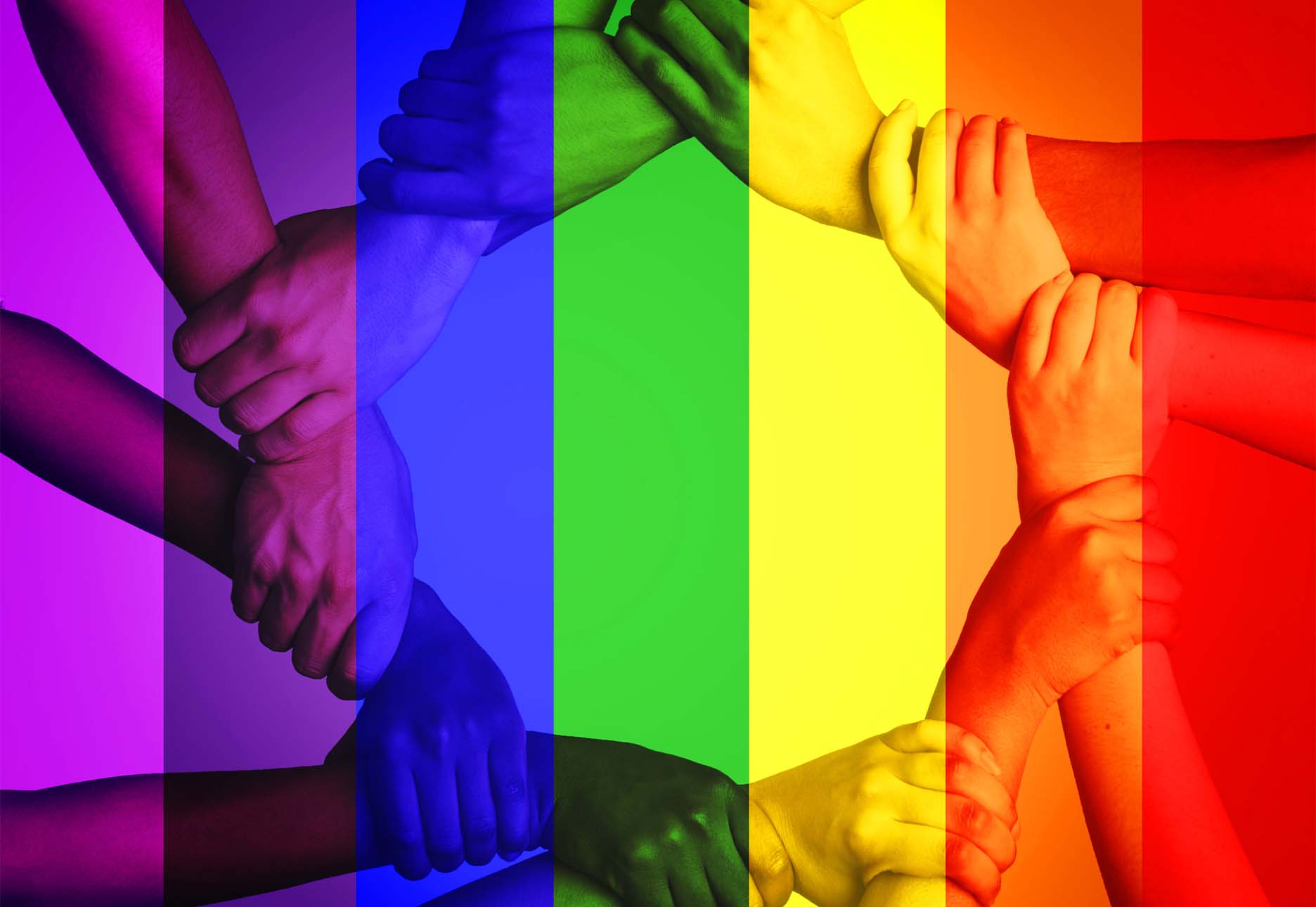Arms linking in a circle against a rainbow-colored overlay.
New students feel a variety of emotions as they begin their journey to pursue higher education: nervousness, excitement, happiness, and hope. However, there is also the desire to belong and get to know your peers, make new friends, share new experiences, and have the freedom of an adult. This is especially true for students living on campus for the first time. Many of these students elect to live on campus so they can experience independence and freedom while still having the security of the college to guide them.
For students whose gender does not conform to their sex assigned at birth, entering student housing can be a stressful and scary experience due to concerns of being accepted by their future roommates, as well as being forced to conform in a way that stunts their ability to explore their identity in a safe and welcoming environment.
Without proper support from college staff and readily available resources, these students can be isolated by their peers and can lose their sense of belonging. This is why it is important to create a safe space for these students in campus housing. How can we create and foster a safe space for them? By enacting a gender-inclusive housing program.
What is gender-inclusive housing? Gender inclusive housing is a campus-housing program that allows students to live with roommates of their choice, regardless of sex. Gender-inclusive housing allows students to freely express their gender identity, or how they identify. For example, a non-binary student of any sex would be assigned to a room with a student of their choice with some limitations varying by institution, including not allowing romantic partners to share a room or suite.
At Baker College, students may choose to opt-in to gender-inclusive housing when they complete their student housing forms each year, ensuring that every student has the ability to pick the assignment that would make them the most comfortable with their living arrangements. Under normal circumstances, first-semester students are assigned by legal sex; however, in subsequent semesters, the College allows students to request their future roommates and complete gender-inclusive housing forms. If they would like to room with someone of a different gender, they will then have the ability to do so. For example, a transgender female student can live with another female student in the same suite if they both have completed gender-inclusive housing forms and have requested each other as roommates on their respective forms.
According to Campuspride.org, Baker College is one of at least 425 colleges and universities that provides gender-inclusive housing for students across the United States, and one of fifteen in the state of Michigan (“Colleges and Universities that Provide Gender-Inclusive Housing,” n.d.). Accessibility to gender-inclusive housing allows students in the LGBT (Lesbian, Gay, Bisexual, Transgender) community to feel more welcome on campus, and gives them the freedom to decide where and with whom they are most comfortable living.
Why is gender-inclusive housing important? Gender-inclusive housing allows students to express themselves and their identities. Students’ gender identity may fall under one or many labels, such as: non-binary, transgender, genderfluid, and gender non-conforming (“Sexual Orientation and Gender Identity Definitions,” n.d.). Allowing students to express themself and their gender identity is crucial to creating a safe, well-rounded campus environment. By not supporting a gender-inclusive housing program, LGBT students could be put at higher risk for violence: “In 2015, the Association of American Universities released one of the largest surveys conducted on campus sexual assault and misconduct. Its findings painted a stark picture: LGBTQ+ students experience far higher rates of sexual assault and harassment than their heterosexual peers” (Edwards, 2019).
Gender-inclusive housing is still a new concept, having been started less than twenty years ago: “Wesleyan College became the first institution to embrace gender-inclusive housing in 2003” (Edwards, 2019). This means that there is still much we can learn about to support LGBT and gender non-conforming students, and by having a gender-inclusive housing program, we are able to set an example for other colleges and universities. This is especially true in my role at the Port Huron campus. We were very excited to welcome our first two students into gender-inclusive housing for the Spring 2022 semester.
Many students will meet new friends in college and create lasting friendships, while others will build connections that will help further their professional careers. Experiences in higher education have lasting effects, and it is the goal of the institution to create positive impacts on students as they continue towards their future careers. It is my hope that more institutions will create a proactive gender-inclusive housing program like Baker College and support students throughout their college experience, regardless of their gender identities.
For more information regarding gender and sexuality, please see this glossary compiled by the Human Rights Council.
References
Colleges and universities that provide Gender-Inclusive Housing. (n.d.). Campus Pride. Retrieved April 23, 2022, from https://www.campuspride.org/tpc/gender-inclusive-housing/
Edwards, S. (2019, January 14). Gender-Inclusive Housing promotes safe, welcoming campus for all students. INSIGHT Into Diversity. https://www.insightintodiversity.com/gender-inclusive-housing-promotes-safe-welcoming-campus-for-all-students/
Sexual orientation and gender identity definitions. (n.d.). Human Rights Campaign. https://www.hrc.org/resources/sexual-orientation-and-gender-identity-terminology-and-definitions



